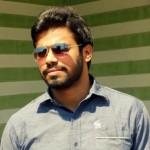- This topic has 4 replies, 3 voices, and was last updated 9 years ago by
 Karan Ahuja.
Karan Ahuja.
-
AuthorPosts
-
-
May 5, 2016 at 2:59 am #38861
 Rajguru M. MohanParticipant
Rajguru M. MohanParticipantHi everyone,
Would someone suggest me how to design bidirectional TWDM PON.
When i use buffer selector in the receiver part , actually it continuously simulating Buffer selector and never gets simulated.
Would you suggest me how could i get my problem resolved?.
Thank you. -
May 5, 2016 at 4:46 pm #38913
 gulkaran bajwaParticipant
gulkaran bajwaParticipantHello rajguru,
In TWDM scheme based PON TDM is used for uplink in which different user of ONU can send their data with same wavelength.
i think you are messing with Dynamic Y select there are some important parameter you should concern first
The formula for the Dynamic Y Select 1 for x time slots is given by default
Switching Time event is depend upon X= how many users you are using on same wavelength
For example in BPON example given by Optisystem where X=8 because they are using 8 ONUs which uses same wavelength
So in a default formulate change the value of X might be that will be helpful to you because i was facing same problem before. -
May 5, 2016 at 9:58 pm #38915
 Karan AhujaSpectator
Karan AhujaSpectatorHi Rajguru
As we know studies have been carried out on NG-PON2 enabling technologies, such as 40 G TDM-PON,wavelength division multiplexed PON (WDM-PON), time and wavelength division multiplexed PON (TWDM-PON) and orthogonal frequency division multiplexing PON(OFDM-PON).
And among all these technologies, TWDM-PON has beenselected as the best candidate for NG-PON2 because itsupports backward compatibility, flexibility and static sharing.
At the OLT side, a set of laser diodes such as distributedfeedback (DFB) laser diodes operating at different wave-lengths serve as downstream laser sources, followed by aWDM for multiplexing.
Therefore, ONU must contain tunable trans-mitters and receivers devices. A tunable filter at thereceiver is used to select or tune to any of the fourdownstream wavelengths. In case of upstream wave-lengths, the tunable laser is used to provide colorlessONU (free operation wavelength) to enable easier networklaying and maintenance.Regards
-
May 5, 2016 at 9:59 pm #38916
 Karan AhujaSpectator
Karan AhujaSpectatorThe TWDM-PON ONU tunable transmitter is used to tune its wavelength to any of the upstream wavelengths.
any techniques have been developed as candidates ofupstream laser source, including spectral slicing of broad-band sources, remote reflective modulators, and injection locking. The most common lasers for upstream laser source are the directly modulated Fabry-Perot laser diode(FP-LD) and the reflection semiconductor optical amplifier(RSOA.
n addition to RSOA and FP-LD laser sources, there are other lasers such as DFB laser with temperature control(TC), DFB laser with partial TC multi-section distributed Bragg reflector laser (electrical control) without cooling,external cavity laser (ECL) with mechanical control with-out cooling, and ECL with thermo/electro/piezo/magneto-optic control without cooling. -
May 5, 2016 at 10:00 pm #38917
 Karan AhujaSpectator
Karan AhujaSpectatorWe have lots of benefits of tunable laser. They are as: As tunable lasers are classified into three structural types: an external cavity laser, a distributed feedback (DFB) laser array, and a distributed Bragg reflector (DBR) laser. All of these laser structures provide a tuning range of more than 35 nm, which is required for DWDM systems. Another important aspect of the tunable lasers performance, when switching between wavelengths, is the wavelength stability of the device. As the laser tunes into its desired wavelength, there is a settling drift before the channel finally stabilizes. This drift can have a large impact on the performance of a dense wavelength division multiplexed system (causing adjacent channel interference) and therefore must be fully characterized, in terms of both the magnitude of the drift and the time it
takes to settle to the destination wavelength. The external cavity laser which can an easily provide a wide tuning range because optimum optical filters can be selected.This laser is a strong light source for digital coherent systems. Its drawbacks are that complex tuning control is needed to suppress mode hopping and that it has many optical parts.
Hope this information will be of some help
Regards
-
-
AuthorPosts
- You must be logged in to reply to this topic.

